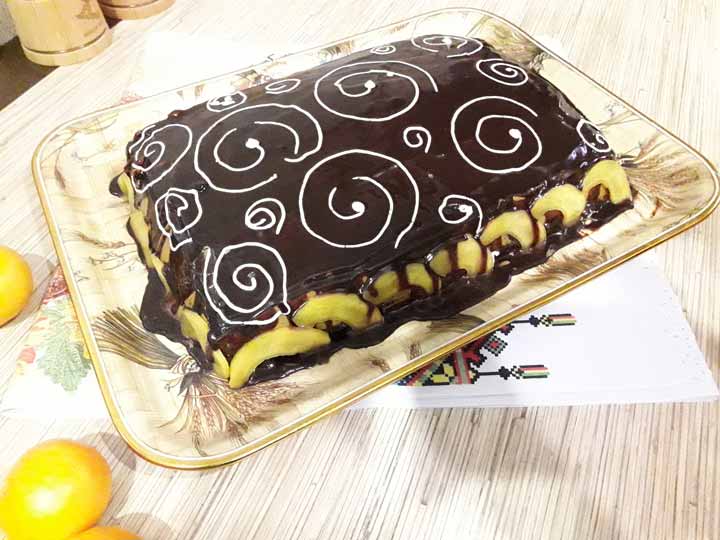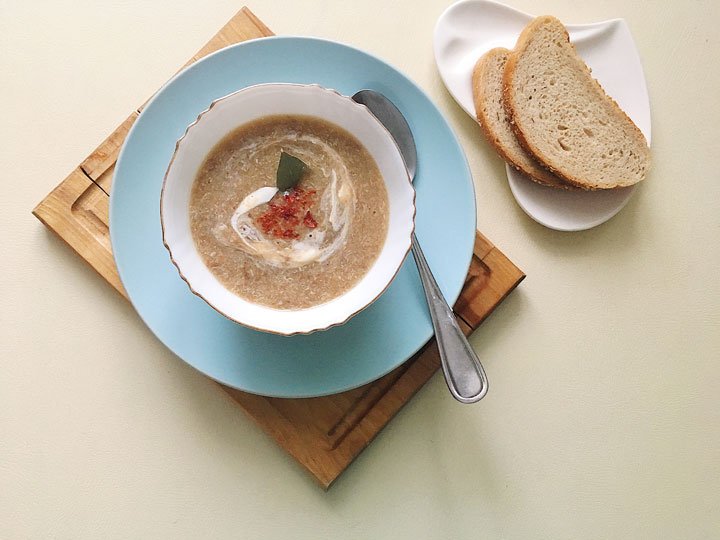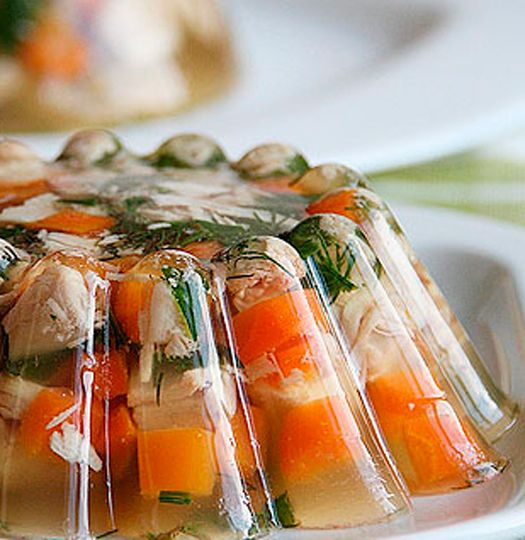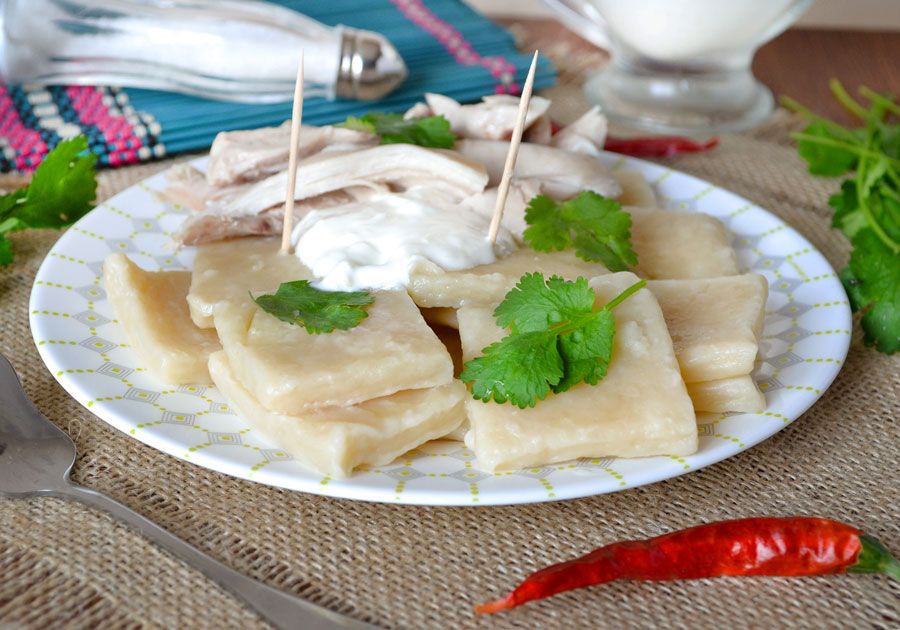Eggplant in adjika
- Nutrition Facts
- Calories: 245
- Protein: 9.8
- Fats: 20.5
- Carbohydrates: 3.4

Eggplant in adjika can be cooked not only for the winter. Such spicy eggplants are perfect as a savory snack at any time of the year. But, since it is in summer that eggplants, tomatoes and sweet peppers are the most delicious and cheap, you can stock up on this original and tasty dish for the long autumn and winter months. And then every time you open a jar of eggplant adjika, you will remember the warm and generous summer harvest.
The history of the dish
The word "adjika" comes from the region of Abkhazia, and simply means "salt". Adjika traditionally consisted of herbs and spices ground on a stone - hot red pepper, coriander, utskho-suneli and other herbs, garlic and table salt. Later, the recipe was modified, often tomatoes and other vegetables are added to adjika, while maintaining spiciness. Eggplant in adjika for the winter is a dish that was first cooked in Georgia. Georgian cuisine relies on the contrast of spicy and spicy, and this combination is in our recipe.
Ingredients:
- Eggplant - 1 kg
- Sweet pepper - 1 kg
- Tomatoes - 1 kg
- Garlic - 2 heads
- Hot red pepper - 1 pod
- Salt - 50 g
- Sugar - 150 g
- Vegetable oil - 100 ml
- Vinegar - 10 ml
Cooking plan:
- Before you cook eggplant in adjika, the recipe of which you are reading on this page, put it on the table and measure all the ingredients. Of course, it is better to buy vegetables for this snack at the market, because farm products are richer in taste, color and aroma. We thoroughly wash all vegetables from the ground under running water.

Let's prepare all the ingredients for cooking eggplant in adjika
- Prepare vegetables for chopping. We cut the tomatoes in half and cut off the green part, in which the tomato is attached to the branch. Garlic is peeled and disassembled into cloves. Cut the sweet pepper in half and take out the seeds and membranes. We cut off the stalk of hot pepper, leaving the seeds and membranes inside the pepper, with them the adjika will be sharper.

We clean sweet peppers, tomatoes, garlic and hot red pepper from seeds and inedible parts
- For chopping vegetables, we will use a meat grinder with a fine mesh, you can also use a food processor or blender. Grind tomatoes, sweet peppers, garlic and bitter red pepper with seeds in a meat grinder.

Garlic cloves, hot and sweet peppers, as well as tomatoes, scroll through a meat grinder with small holes
- It turned out a whole bowl of raw adjika with an incredible aroma. Pour the vegetable mass into a saucepan with a volume of 4-5 liters and put on fire.

Pour vegetable puree into a large saucepan and put on the stove
- We send salt, sugar to the vegetable puree in a saucepan and pour in vegetable oil. I used refined sunflower oil, you can also take olive oil.

Add salt, vegetable oil and sugar to the pan
- We cut off the stalks of the eggplants and cut them into rings 1-1.5 cm thick. You don’t need to peel the peel, it is the peel that helps to keep the shape of the eggplant rings during their stewing in adjika.

Cut eggplant into rings 1-1.5 cm thick
- Add the chopped eggplants to the pan with boiling adjika, bring the spicy vegetable mass to a boil.

We send eggplants to a pot with boiling adjika
- After the eggplants are saturated with liquid and completely immersed in adjika, make the fire small and cook adjika for 40 minutes with the lid ajar.

Simmer adjika with eggplant over low heat for 40 minutes, opening the lid to release steam
- After 40 minutes of stewing, the adjika evaporated a little and the eggplants became soft, but at the same time they keep the shape of rings, do not fall apart thanks to the peel. Pour vinegar into the pan and cook our eggplants in adjika for another 3 minutes.

After 40 minutes of stewing, pour in the vinegar and boil for another 3 minutes
- Since we cook eggplant in adjika without sterilization, we need to sterilize jars and lids for long-term storage. To do this, boil 1 liter of water in a saucepan, lower the lids into boiling water, and install a grate on the pan. We put clean jars on the grate with the neck down and boil water for 10-12 minutes, until the steam warms the jars well from the inside. I got 2 cans of 720 ml, 2 cans of 350 ml and 1 can of 300 ml, total 2.5 liters of eggplant in adjika.

We sterilize jars and lids on a wire rack over a pot of boiling water
- Place the sterilized hot jars on their side on a clean towel.

We put the prepared jars on a clean towel, take the lids out of boiling water
- We lay out hot eggplants in sterile jars, filling them with adjika. Close the jars tightly with lids.

We pour adjika and lay the eggplants in jars. Close the jars tightly with lids or roll them up with a special device
- Turn the jars of adjika and eggplant upside down, set them on a towel and wrap them tightly with another towel on all sides. Leave to cool overnight, then transfer to a pantry or basement.

We leave the jars to cool, wrapped in a warm blanket or towel on all sides
- So our savory snack is ready - eggplant in adjika for the winter. Awesome, as my husband says, eggplant is ideal to serve with any kind of meat, delicious with dumplings or potato dishes. Yes, just spread black bread with adjika, put an eggplant ring on top and enjoy the taste!

Spicy eggplants in adjika are ready. You can store such an appetizer at room temperature
- Bon appetite.

Bon appetite
Benefits of food
There are undoubted benefits in dishes such as eggplant in adjika for the winter. Recipes for spicy dishes need to be prepared more often, because such dishes promote digestion, stimulate appetite, strengthen the body's defenses and strengthen cell walls, preventing harmful viruses from passing through.











